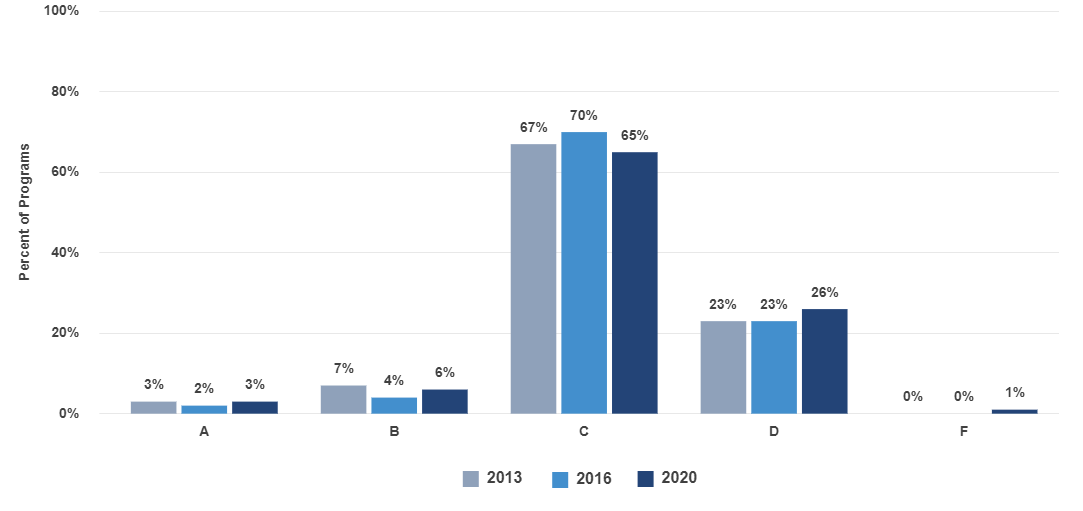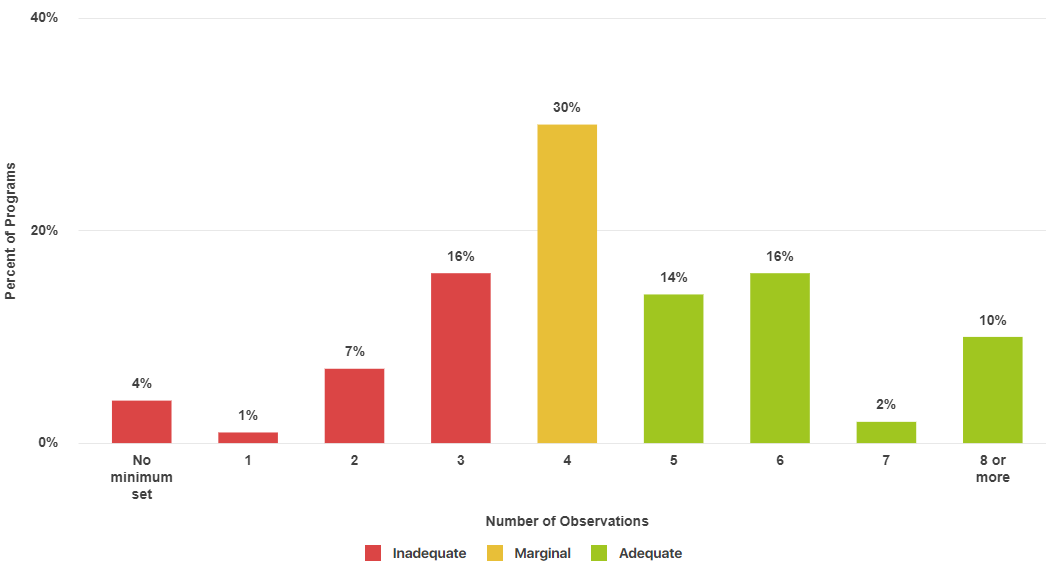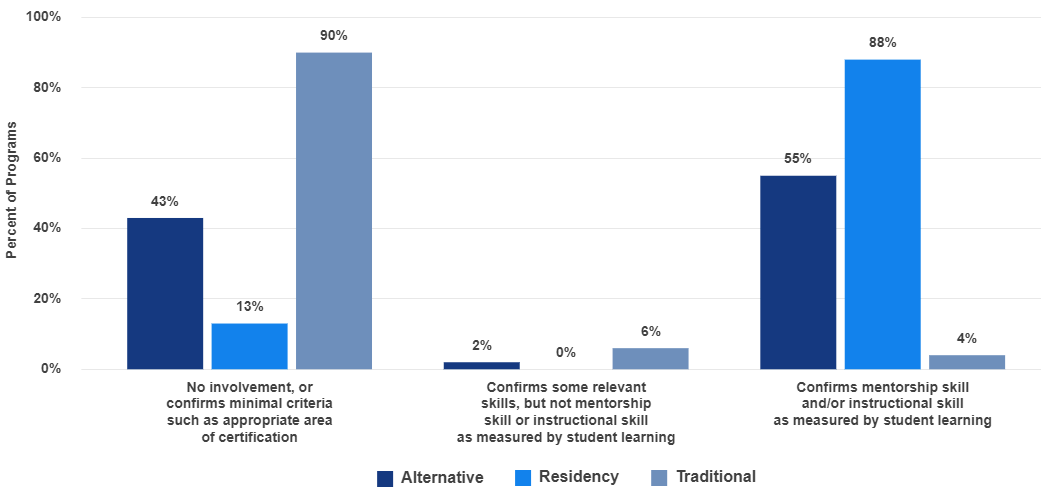Evaluation is based on information from a variety of sources, primarily the following:
Student teaching handbooks, student teaching syllabi, and other documents that describe program policies and practices during student teaching, residency, or the first year in the classroom (for non-traditional programs where participants are teachers of record)
Applications filled out by prospective mentor/cooperating teachers
Forms returned to programs by school districts with information about prospective mentor/cooperating teachers
Correspondence between programs and school districts during the process of selecting mentor/cooperating teachers
Contracts between programs and the school districts where program participants are placed for student teaching, residency, or the first year in the classroom (for non-traditional programs where participants are teachers of record)
Programs are asked to provide the documents listed above. Once they are assembled, a team of analysts reads them to collect information on 1) whether each program's clinical experiences include a period of student teaching or residency, 2) how often supervisors are required to observe candidates during clinical experiences, and 3) what role the program plays in the selection of mentor teachers.
To be hired, the analysts who work on this standard must complete a rigorous assessment of their analytical ability, which only 12% of applicants satisfy. Analysts do not begin officially rating programs until they can complete practice ratings with at least 90% agreement to experienced raters' work. To ensure consistent interrater reliability, 20% of programs are randomly selected for a second evaluation, and scoring variances are periodically assessed. Analysts may be asked to complete additional training if scoring variances are greater than 10%.
Length and Intensity of Student Teaching or Residency
For this evaluation, student teaching or residency is defined as an extended experience in which future teachers spend time in an experienced teacher's classroom.
When identifying the length of student teaching or residency, analysts look for the number of weeks during the program's final year when teacher candidates spend the equivalent of at least four days per week in an experienced teacher's classroom.
Written Feedback Based on Observations
Observations are counted if they occur during the final semester of student teaching, residency, or the equivalent. For non-traditional programs, they are counted if they occur during the first semester in which participants are teachers of record. Only observations conducted by program supervisors and that are accompanied by written feedback are relevant.
If a program does not require that written feedback is provided after each observation, analysts count the number of times that feedback based on observations is provided through a midterm and final evaluation.
Selection of Cooperating/Mentor Teachers
Recognizing that selection of mentor/cooperating teachers is a cooperative process which appropriately involves both programs and their school district partners, analysts check that programs play an active role in this process. Specifically, analysts determine whether programs collect enough information on mentors to confirm that they possess the necessary skills. This process can be accomplished in many ways: Asking cooperating teachers to fill out an application or requesting that principals comment on the skills of teachers they nominate are the most common. However, it's not enough for a principal to check "yes" or "no" on a list of criteria.
The range of relevant qualifications for which mentor teachers could be screened by programs is broad, and can include mentorship training, instructional skills, or classroom management ability. However, these qualifications must go beyond minimum standards, such as three years of experience or holding an appropriate certification. Programs are given additional credit for screening mentor teachers for demonstrated mentorship ability and instructional skills, as shown by the teacher's positive impact on students' learning.
Precise requirements for mentor teachers guide the selection process, so analysts also track whether program criteria for mentor teachers state that they should be both strong mentors of adults and highly effective instructors. However, this is not factored into overall grades.
In previous iterations of the Teacher Prep Review, traditional programs were evaluated under the Student Teaching standard and non-traditional programs under the Supervised Practice Standard. The Clinical Practice standard unifies these two standards.








